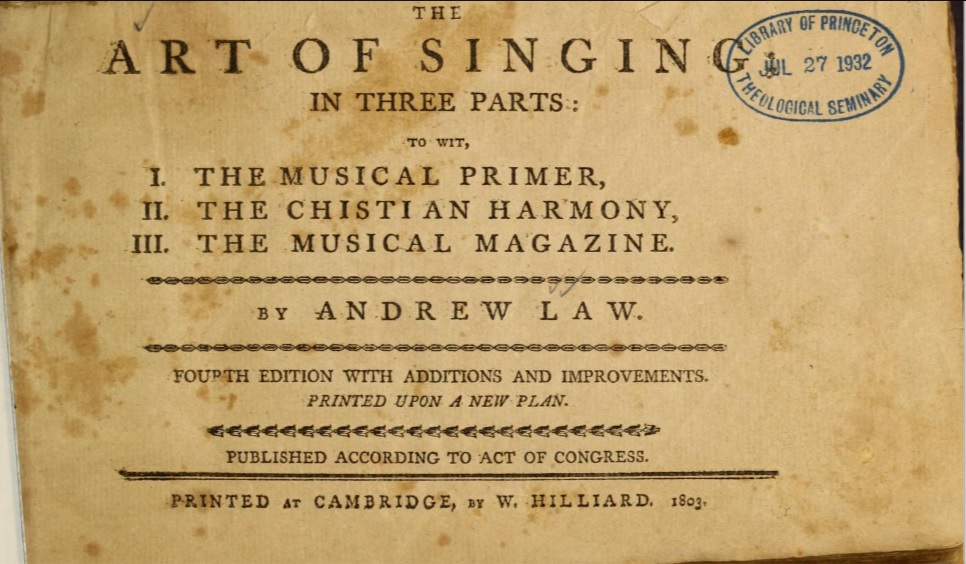

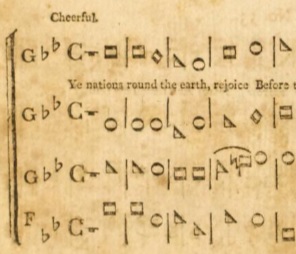
The Art of Singing in Three Parts: to wit, I. The Musical Primer, II. The Christian Harmony, III. The Musical Magazine was published in 1803 by Andrew Law (1749-1821) using his patented four syllable shape-note music notation. This was his fourth edition with the previous three editions printed using standard round-note music notation. The shapes that Law used were a square for "Fa," circle for "Sol," right-angle triangle for "La," and a diamond for "Mi." These shapes were the same shapes that William Little and William Smith used in their book, The Easy Instructor, published two year earlier. The only difference between the two systems is that Law reversed the shapes for "Fa" and "La."
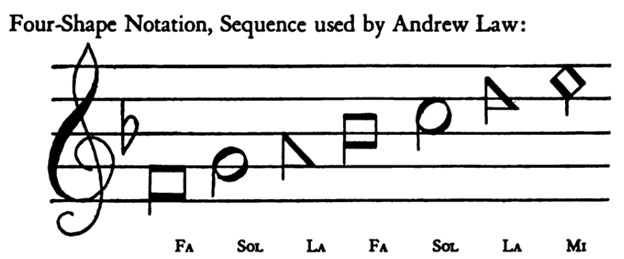
Law had a common acquaintance with Little and Smith, Philadelphia shopkeeper John Connelley. Therefore, it was probably not by happenstance that these gentlemen used the same four shapes to represent the four syllables.
Law also made other changes to his music notation. Even though he eliminated the lines and spaces in the staff, the various notes would move up or down from the previous note to portray going up or down in pitch--the shapes of one note to the next would show the proper interval from one note to the next. For the music student, this system works. However, for an individual who has spent a lifetime reading shape-notes it can be a stumbling block because the switch between "Fa" and "La" as compared to all other shape-note books.
Law kept the key signatures, time signatures, and measure bar lines. He changed the treble clef to a "G" and the bass clef to an "F." His repeats are marked with an "R." Unlike other oblong shaped books of the day, he also moved the melody to the top line, and made the tenor line a harmonization part.
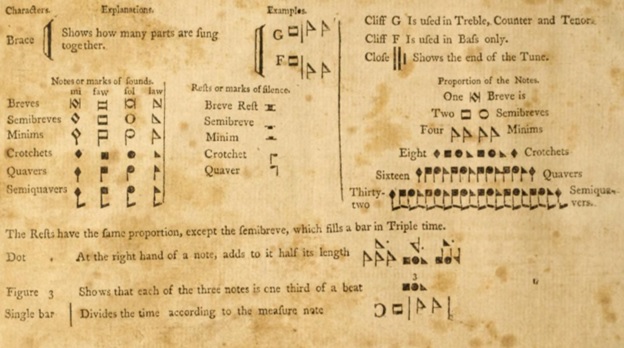
In the example above from the rudiment section of his book, he demonstrates his changes to quarter, eight, and sixteenth notes. The quarter note has a blackened note head and has no stem. The eighth note has a blackened note head and stem but has no flag. The sixteenth note has a blackened note head, stem, and one flag. He also uses the letter G is the Treble clef, and the letter F is the Bass clef. The letter R is used for the repeat.

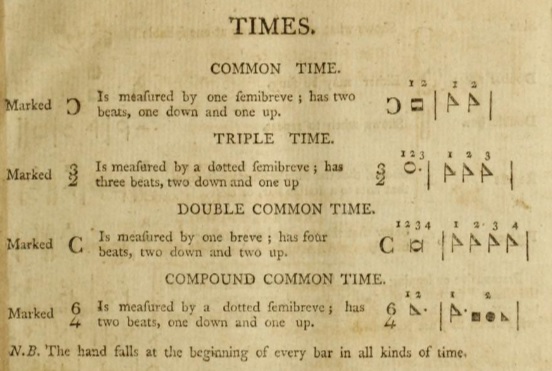
There is no doubt that for these two books and their authors to use the same four shapes has to be more than a coincidence. Law claimed that he was teaching his shape-note system as early as 1786, but he did not obtain his patent until 1802.
Prior to this edition, Law had three previous editions of his book. Each of these editions used standard music notations: lines and spaces, clefs, repeats, notes, etc. He also had the melody of the song in the tenor, or third line, which was normal that day and time.
It is the patent note system of Little and Smith that we use today, and we must give them credit. Law's patent note system faded into history.
Sources:
Britton, Allen P. "The Original Shape-Note Tune Books." Studies in the History of American Education, Ed. Claude Eggertsen,.(Ann Arbor: School of Education, University of Michigan, 1947).
Hatchett, Marion J. A Companion to 'The New Harp of Columbia,' (Knoxville: The University of Tennessee Press, 2005).
Law, Andrew. The Art of Singing in Three Parts: to wit, I. The Musical Primer, II. The Christian Harmony, III. The Musical Magazine. (Fourth Edition with Additions and Improvements. Printed upon a New Plan.) Cambridge: W. Hilliard, 1803).
McLemore, B. F. Tracing the Roots of Southern Gospel Singers (Jasper, TX: B. F. (Bob) McLemore, 2005).